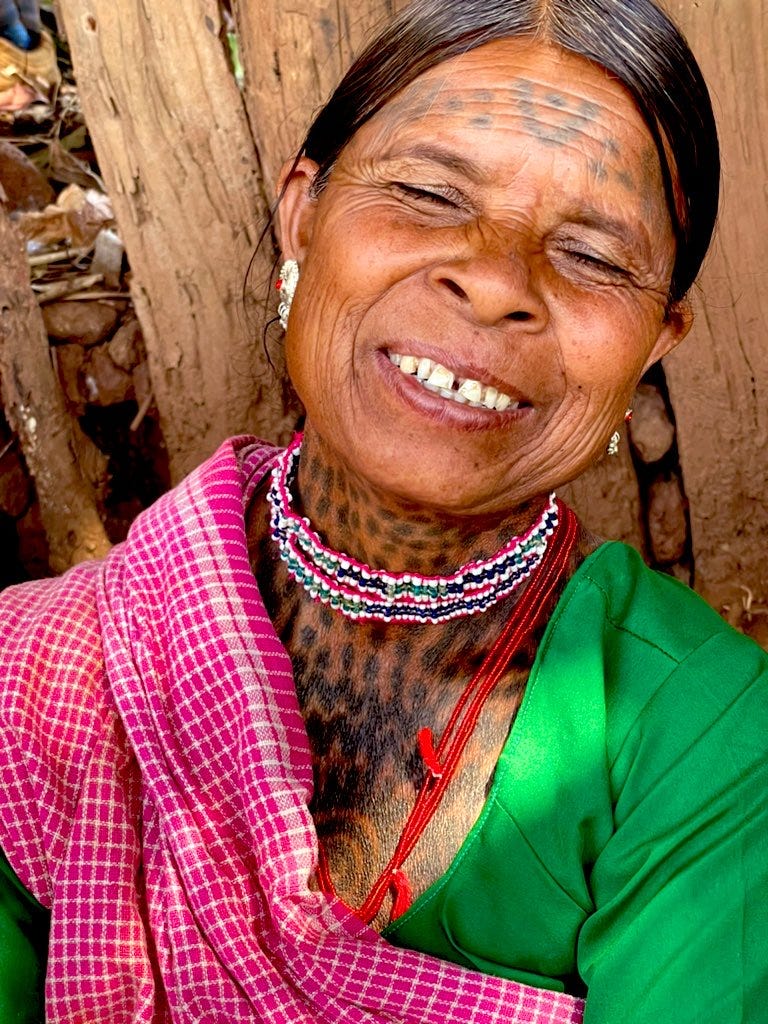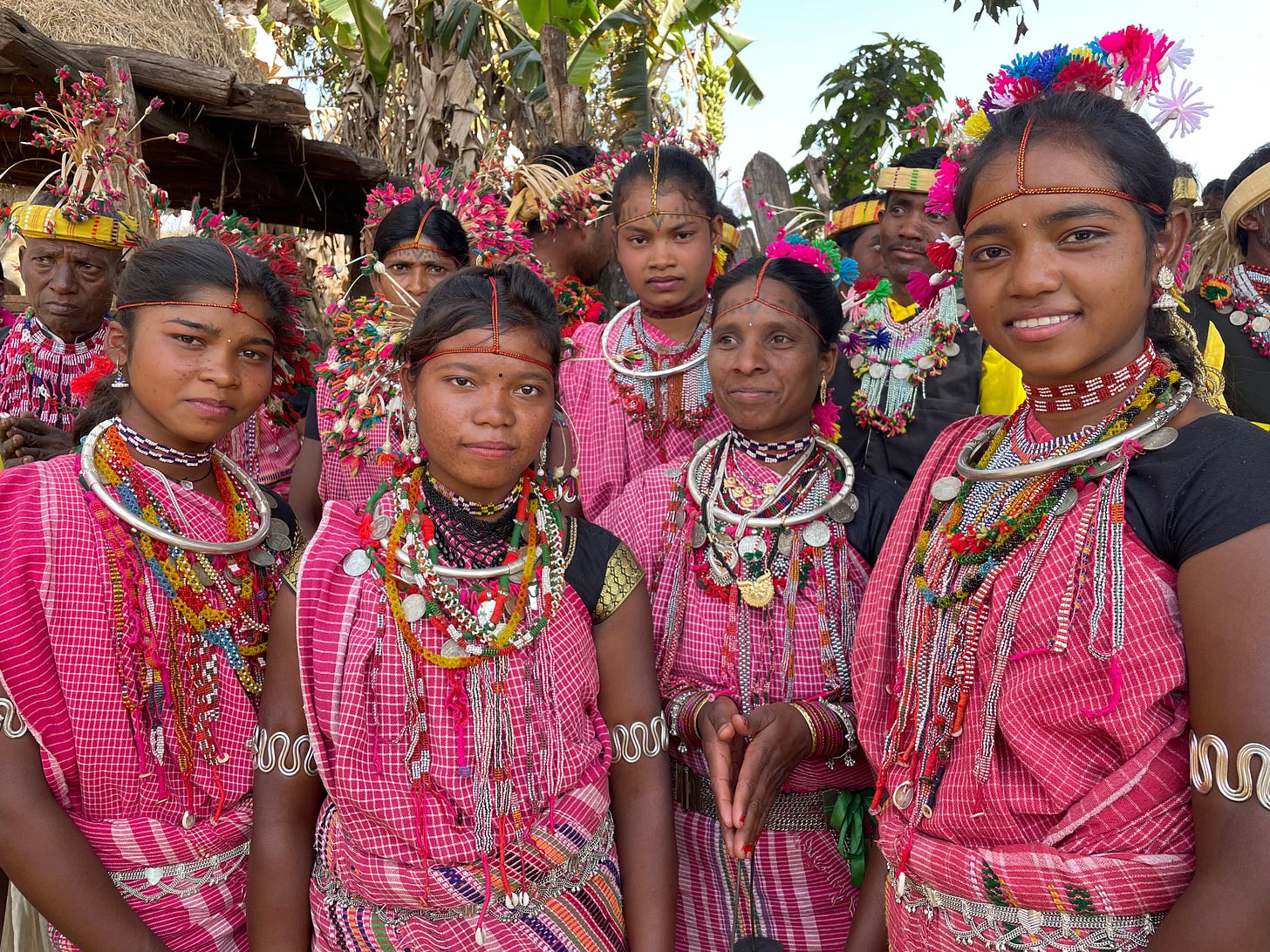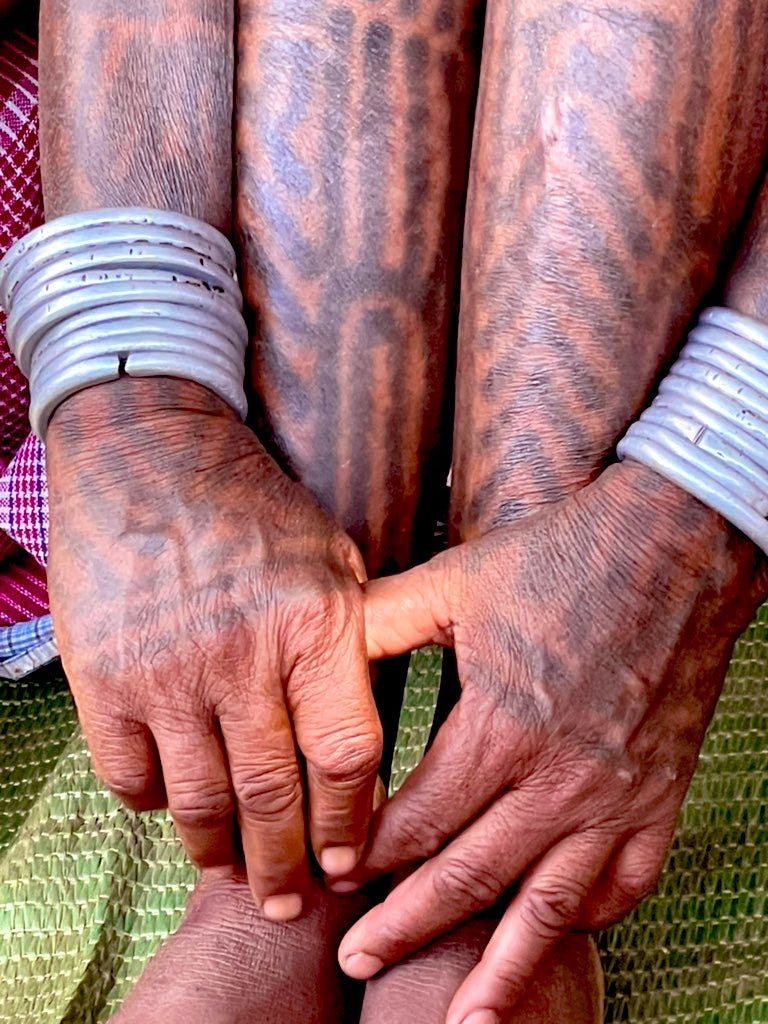Journeys and Jottings
Issue 70 - Meet the Baigas - one of the ethnic groups who live along the periphery of the forests in Central India .
Hello,
I know it’s been a good couple of months since I have been active here, but a quick career update. The last few months have been both transformational and enriching and have packed in quite a punch. After almost two decades I am back in the corporate world where I get to do three of my favourite things - experiential travel and content, setting up a new team, and working on a project from scratch.
I have joined Mondee, a travel tech company and the world’s leading ‘Marketplace for Experience economy’ and life has been rather busy. That said, am excited that it’s a new phase in my life, and with my love for experiential travel and storytelling, I am so grateful for the opportunity.
However, here I am again with yet another travel story and this time, let’s meet the Baigas, a fascinating ethnic group who live along the periphery of the forests in Central India.
Meet the Baigas
On a warm summer morning, we chugged along slowly in a bus passing through dark woodlands, listening to legends that breathed life into rivers and trees. Frolicking brooks kept us company as we crossed verdant thickets, driving through the tribal heartland of Madhya Pradesh. Our destination was Silpidi, a tiny remote hamlet, home to about 800 tribals, including the Baigas.
The warm tones of the earth burst into a myriad of hues. The lush forest cover was embellished by shades of purple and red delicate with wild flowers blooming on every branch. The sky wore its usual coat of blue. And to complement nature, the entire village, clad in vibrant colours gathered to greet us, blinding us with their finery.
The rhythm of the beats echoed through the hamlet. A medley of musical instruments was added to the orchestra. The dancers took centre stage, setting the village on fire, donning hues of golden yellows and bright pinks as they sang mellifluously, welcoming us with their traditional ditties and lively dances.
Baiga literally means sorcerer - medicine man. They have often been considered one of the most ancient tribes, cocooned in their world and who still hold on to their traditional rituals and customs. And I got a glimpse into their world when we met the beautiful Baiga women in Silpidi.
Wading through the sea of people who gathered around us, we saw four beautiful women sitting separately in a corner, chatting among themselves, their pink and orange sarees, draped loosely around their slender bodies. As we approached them, one of them, looked up at me, her smile reaching her eyes, lighting up her face.
Strings of beads were wrapped around her neck, while she wore simple but elegant jewellery. Her forehead was inked with a pattern of dots and lines and she stretched her arms to showcase the geometric patterns that decorated them. The sunlight gently stroked her legs as she showed her tattooed legs too. Inked from head to toe. She introduced herself as Chotti Maa as she and her friends displayed the body art to us, briefly explaining the significance.
Referred to as Godna, every part of the Baiga woman’s body is inked with a mix of symbols and motifs, inspired by nature. However, the tattooing is done in stages, indicating the rites of passage in their lives. The first tattoo is on the forehead when they are barely children. The arms are inked when they reach puberty. When the women get married, their backs and legs are adorned as well with myriad symbols. The tattoo on their chest is inked when they become mothers as it stands for fertility. Birds, plants, and flowers are other designs depicted along with an intricate pattern of dots, lines and shapes on their bodies.
However, every tattoo is significant and has mythical and mystical lores attached to it. For the women, it is more than just an identity. It’s their way of showing gratitude and dedicating their naked bodies to their Gods It is according to them the only ornament that they offer to their deities They believe that the Gods would punish them if they don’t offer these tattoos to their deities after death.
While women consider them as adornments and offerings, men have very limited tattoos, often just using patterns and symbols on parts of their bodies that require healing. They believe that the ink from the medicinal herbs will cure them of ailments and keep them healthy and fit.
We spent the day in their company, listening to their stories and learning more about their culture. Tribal beliefs may be rooted in symbols and our rational minds may not understand the mysticism, but every ritual has a deeper meaning with a connection to their roots and identities.
The Tribal Museum in Bhopal is a microcosm of the mythical tribal world and it gives us a peek into their living cultures. And this is where I learnt more about the Baigas. According to the many legends, the Baigas are descendants of Nanga Baiga and Baigin who were created by Vashishta Muni or saint. However, they are one of the oldest tribes in India and are often referred to as sorcerers and medicine men as they are adept in both with an in-depth knowledge of the jungles.
They are forest communities and live very close to nature and still practise some of their Indigenous traditions and rituals. However, the forest is at the very nucleus of their lives with whom they have a mystical connection. The earth is their mother and they don’t even plough the same patch of land again in fear of destroying it. They even take the permission of Van Devi or the Goddess of the Forests before partaking in its natural resources, be it for food or medicinal purposes. They still worship nature and the pantheon of gods represents the various elements.
In recent times, however, civilization and development have dislodged them from their natural habitat but they still live in villages closer to the jungles. Simplicity is at the core of their lifestyle. Their homes are basic with a small courtyard in the centre and are made with natural resources. Music and dance are a form of language for them and on every occasion, be it a festival or a ceremony, the Baigas celebrate with performances, starting with the Karma dance. The Baigas are a living heritage and everything from their tattoos to their dances is a part of their cultural landscape.
Support my work, please
I do hope that you enjoyed reading this issue. Looking forward to your feedback as always. As mentioned earlier, if you would like to collaborate do drop in a message here.
And if you did like reading this issue, would appreciate it if you could upgrade to being a paid subscriber. It costs less than $1 a month and around $10 for the whole year. It would go a long way in supporting me and my work.
We are going to keep the flow of conversations going and I would appreciate it if you would share my newsletter with your friends and family.
See you soon! You can also read my travel stories on my blog and follow me on my social media.
Blog - www.lakshmisharath.com
Twitter - www.twitter.com/lakshmisharath
Facebook - www.facebook.com/travelwithlakshmi
Instagram - www.instagram.com/lakshmisharath









Fascinating...and congrats on the new gig!
Wonderful! And those are terrific photos as well. Did you take them?
Thank you for this introduction to such a magnificent tribe of people ✨